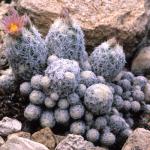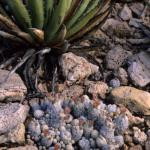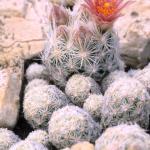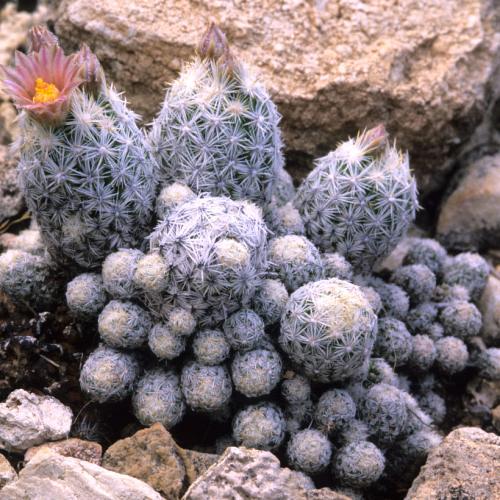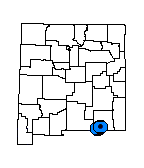Escobaria sneedii var. leei (Lee's Pincushion Cactus)
| USFWS | State of NM | USFS | BLM | Navajo Nation | State Rank | Global Rank | R-E-D Code | NMRPTC Status | Strategy Status |
|---|---|---|---|---|---|---|---|---|---|
| LT | E | S2 | G2G3QT2Q | 3-3-3 | R | SS |
| Overall Conservation Status | Documented Threats | Actions Needed |
|---|---|---|
| WEAKLY CONSERVED | Fire & fire suppression, Collection |
genetic/taxonomic studies, monitoring |
This is apparently a neotenic variety of the species in which juvenile spination is retained throughout the life of the plant.
*New Mexico Native Plants Protection Advisory Committee. 1984. A handbook of rare and endemic plants of New Mexico. University of New Mexico Press, Albuquerque.
*Benson, L. 1982. The cacti of the United States and Canada. Stanford University Press, Stanford, California.
*Britton N.L. and J.N. Rose. 1923. The Cactaceae IV. Carnegie Institution, Washington D.C.
*Weniger, D. 1970. Cacti of the Southwest. University of Texas Press, Austin.
Flora of North America Editorial Committee. 2003. Flora of North America, volume 4. Oxford University Press, New York.
Baker, M.A. and R.A. Johnson. 2000. Morphometric analysis of Escobaria sneedii var. sneedii, E. sneedii var. leei, and E. guadalupensis (Cactaceae). Systematic Botany 25(4):577-587.
Roth, D. 2016. Lee's Pincushion Cactus (Escobaria sneedii var. leei). Post-fire Monitoring Report. Unpublished report prepared by EMNRD-Forestry Division, Santa Fe, NM for the U.S. Fish & Wildlife Service, Region 2, Albuquerque, NM.
For distribution maps and more information, visit Natural Heritage New Mexico

